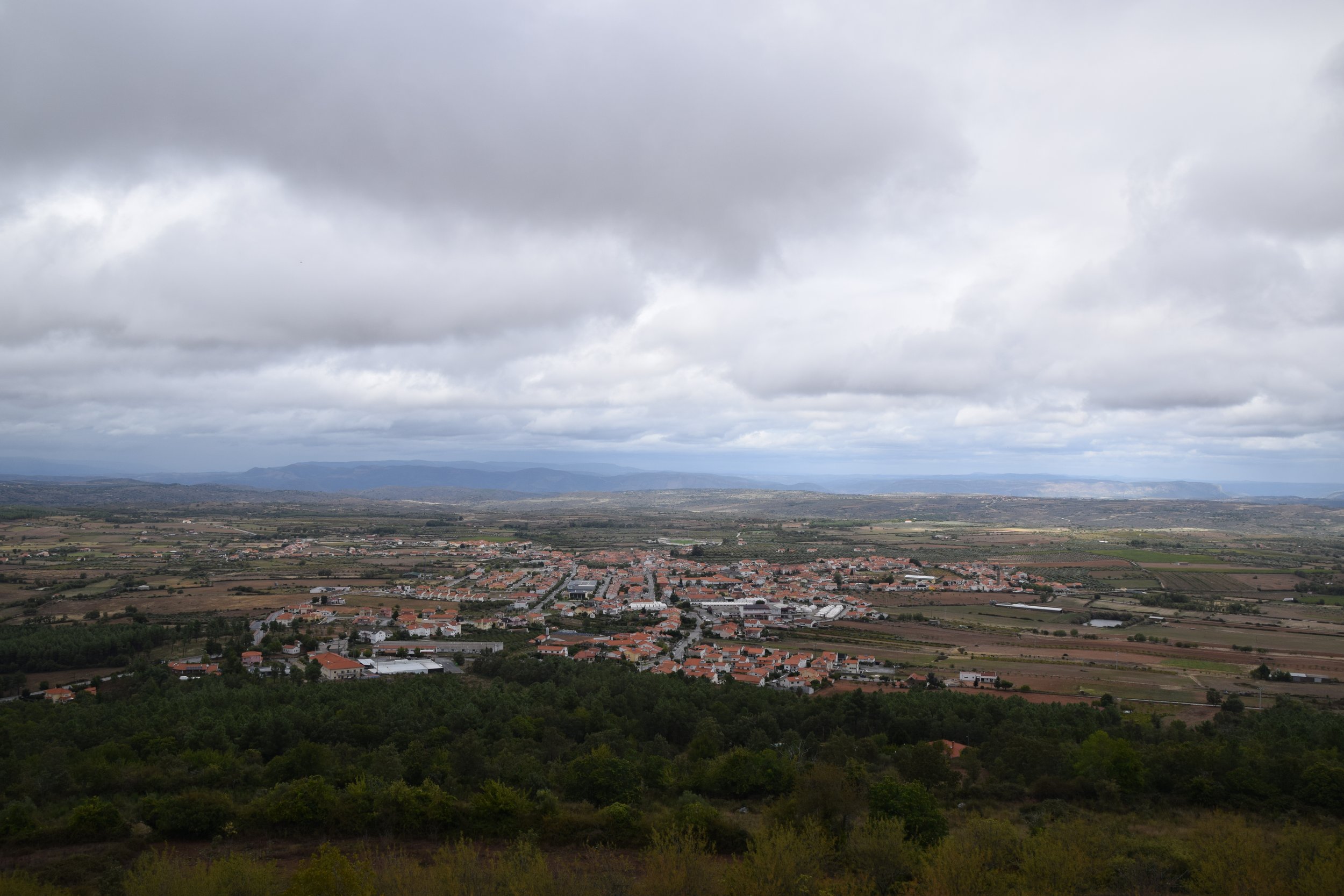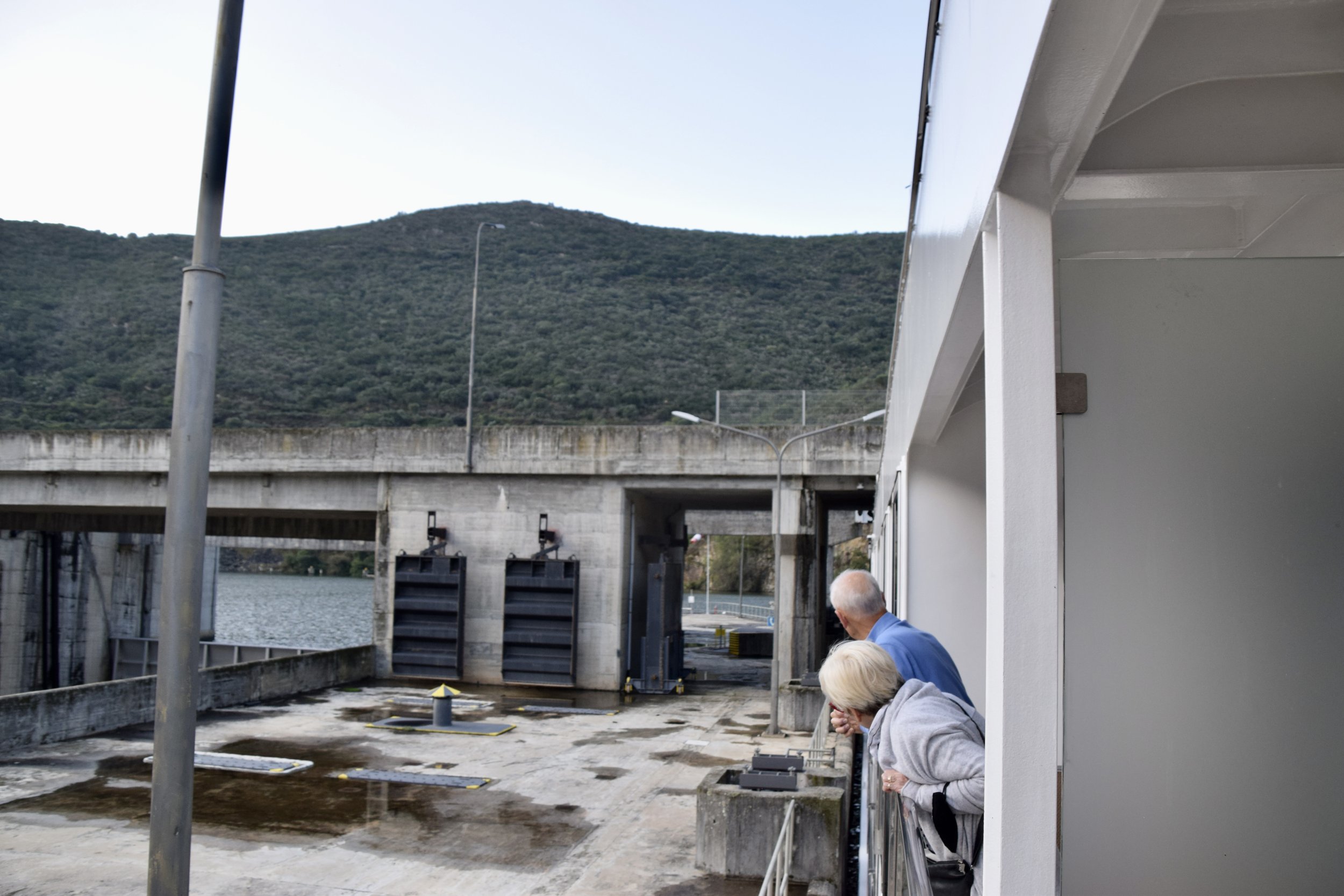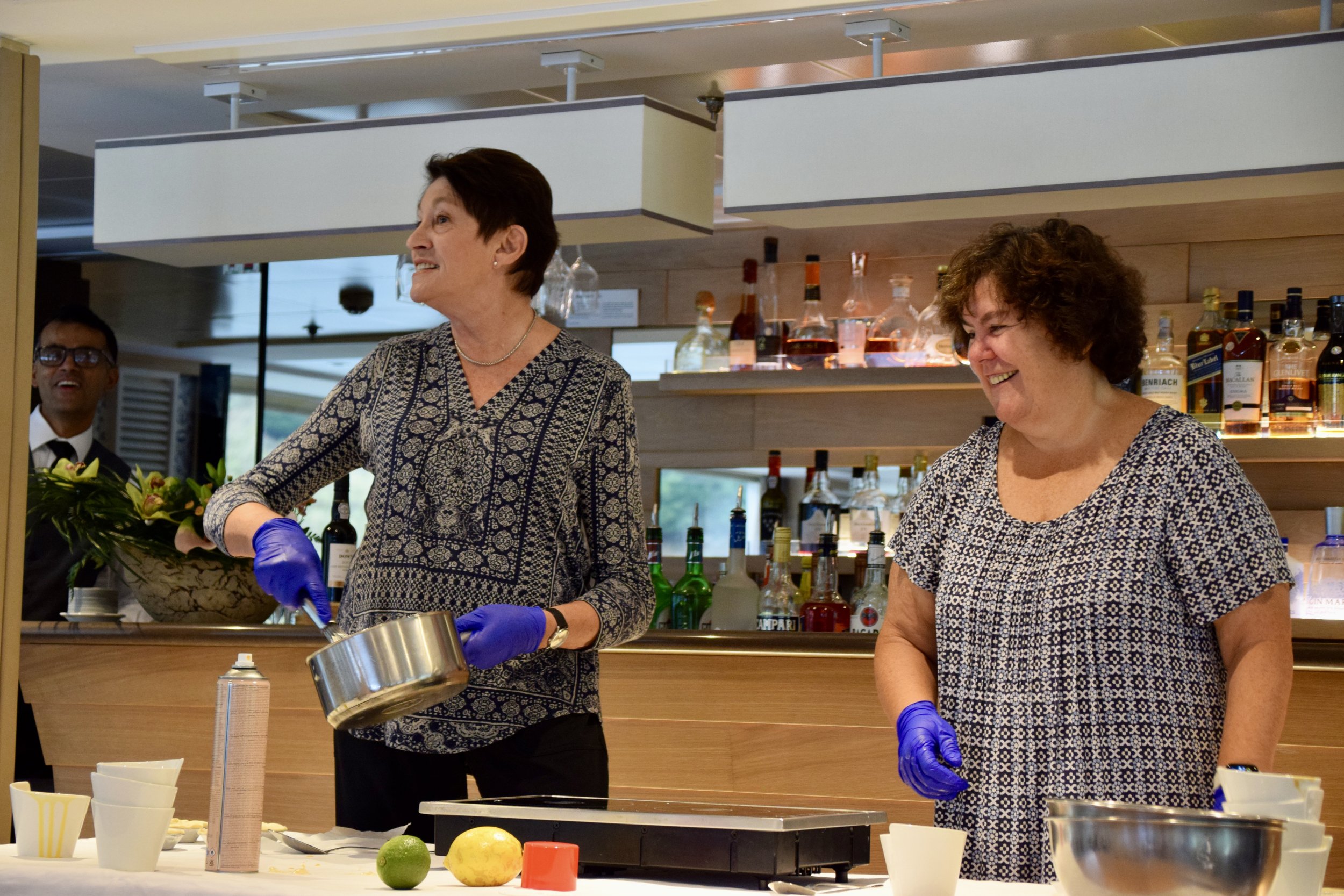
Castelo Rodrigo
Off we went this morning down the Duoro river, where we encountered yet another lock. We’re getting pretty jaded on these, but it’s still fun to stand on your balcony and marvel at how close you get to the walls.
At the upper end of the lock, we took a hard left and suddenly everything changed. We went from lush, green vineyards to rocky crags, steep canyons, and rugged terrain.
Honestly, as we traversed the suddenly narrow river with the rocky walls on both sides, I though to myself, “all we need now is a big earthquake and we’ll be face-to-face with Marshall, Will, and Holly and maybe a Sleestak or two.
No, I’m not going to explain that. Those of you who “got it” now have a banjo-laden theme song stuck in your head. Sorry, not sorry.
Anyway, with the sudden shift to rocky landscapes, we also noticed that grape vines gave way to cactus. Certainly not what I expected to see.
We wouldn’t be docking anywhere until later in the day, so the executive chef gave us a demonstration of how to make those incredibly delicious little Portuguese custard tarts.
Two volunteer/victims were brought up to do the cooking and we all got samples afterward.
The good news: they’re really easy to make and they don’t involve any unusual ingredients.
The bad news: ONE of these little 1-inch-round tarts is 530 calories. So two of these is basically a double cheeseburger AND fries. Holy crap. I could easily eat a dozen of them.
Eventually, we docked at a little town called Barca d’Alva. It’s right where the Duoro river splits and if we were to walk about 100 feet from the ship, we’d be back in Spain.
Everything on the right side of this map is Spain.
That blue line across the river right next to our blue “you are here” dot is a lovely bridge that’s visible from our balcony.
Photo by Ken.
Once we docked, it was time to get on the bus and head up into the hills to the historic village of Castelo Rodrigo.
Full disclosure: I’m not a history buff. At all. I was pretty much “history’d out” by the time we got here. Also, this part of the world is heavily Roman Catholic and I’ve heard about a hundred variations on THAT history already on this trip, too.
So when we got off the bus in this little historic village and the guide started into the history, I’ll admit that I turned off my headset. I found the little town architecturally interesting and geographically interesting and I honestly couldn’t have cared less who founded it or why.
There was a little church in the town (of course)
and I’ll just be honest again: it was creepy. I mean, this is one of the things you’re met with when you first walk in:
And literally right next to that:
Alrighty, then.
I bailed. One nice thing about not staying with the group is that you have the opportunity to see some things without being crowded by the others in the group. Such was the case when I climbed the hill to the castle ruins.
It was nice to basically have the place to ourselves.
The view from up here was particularly nice.
Ken took lots of pics, too.
Even though the little village is a UNESCO heritage site, there are around 50 people who live here. It was easy to pick out their houses.
…and while the hoards of tourists would get on my nerves, I gotta admit that it’s a cute little village.
There’s even a nice puddy tat who hangs out in one of the shops.
The weather, however, was not conducive to leisurely meandering around the village. There were gale-force winds and they were like ice. I did manage to get down the road a bit to get one last shot of the castle ruins…
…and then I made my way back to the bus, almost an hour before our scheduled departure time. And hooray that I did, because I hadn’t been on the bus very long when the skies opened up and everyone not already on the bus got drenched.
Back on board, the dinner tonight was A Taste of Portugal and while I admit that Portuguese cuisine isn’t my favourite, I could’ve eaten my weight in the empanadas and the green bean tempura (and I might’ve!).
We also met a really nice couple, Tom and Minnie, from Delaware during dinner. Neither Rob nor I are good at being seated next to strangers at dinner, but we’d each had two martinis beforehand, so it all worked out.



















